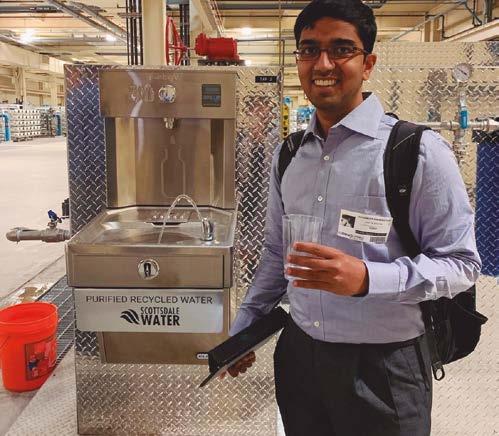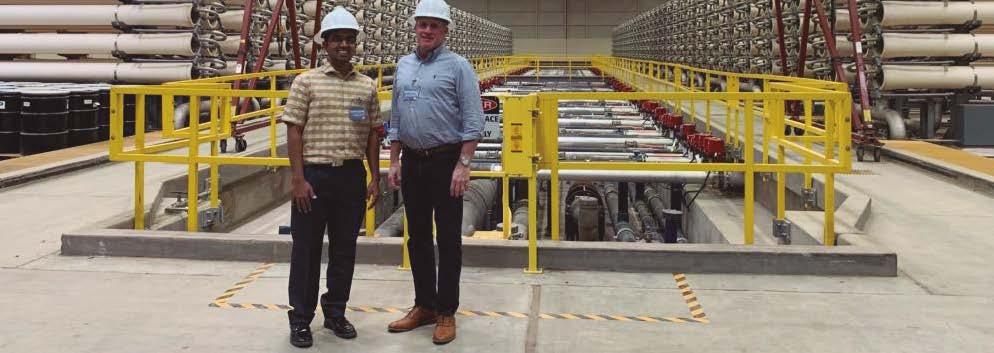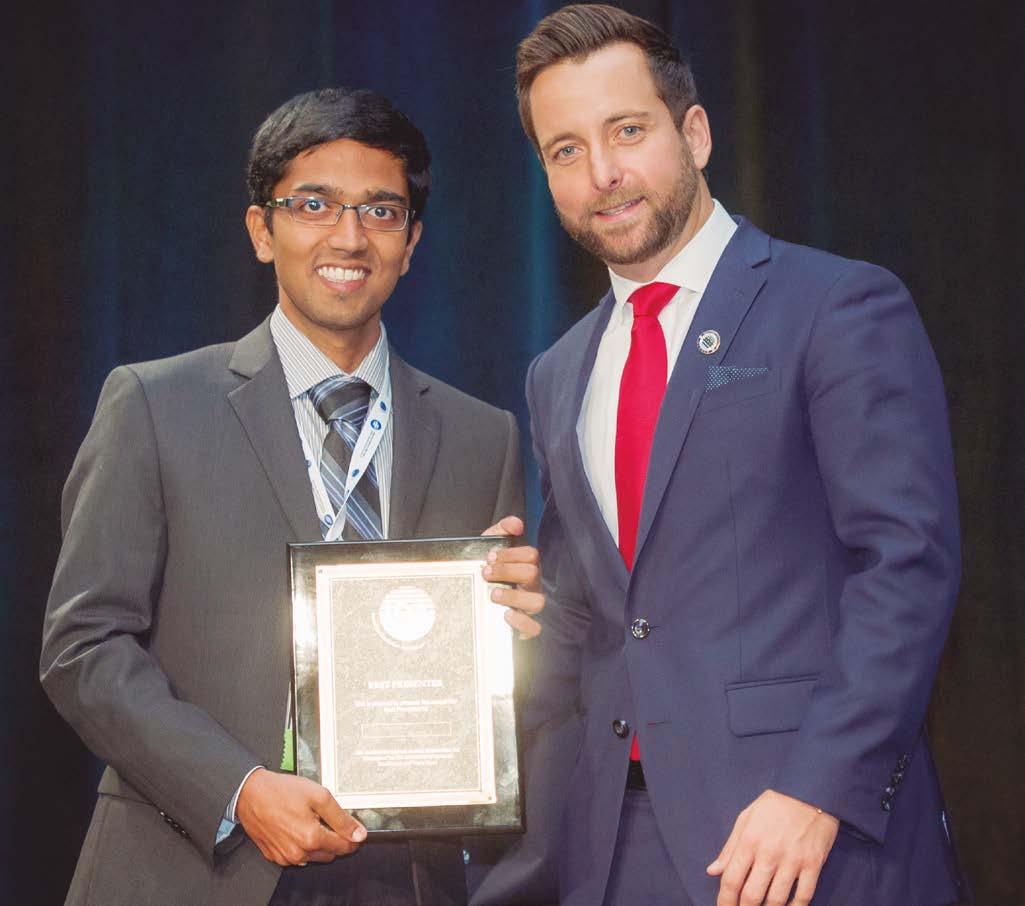
4 minute read
ACADEMIC VIEWPOINT
REVIEWING THE 2019 IDA FELLOWSHIP EXPERIENCE
By Dr. Jaichander Swaminathan
As a young academic interested in Desalination and Water Reuse, I am always looking to identify interesting and useful questions that I should attempt to answer. Building collaborations with researchers with complementary expertise is critical to expand my horizons and maximize the impact of my work. Selection as this year’s IDA Fellow helped me immensely on these fronts. Based on my training in thermal sciences as a mechanical engineer, I have worked on understanding the energy efficiency and relative performance of various desalination technologies from a fundamental thermodynamics’ perspective. Methods for improving the energy efficiency of a desalination process such as RO, operating at a certain fixed recovery ratio, can be categorized as: 1. Increasing system size – Increasing system size while keeping overall production constant results in lower flux operation which in turn requires a lower driving force and hence external energy input. However, investing in a larger system requires a higher upfront capital cost. 2. Reducing transport resistance (e.g., improving the permeability of RO membranes) also reduces the required driving force to sustain the same productivity at a given system size. A higher permeability membrane or an evaporator with better heat transfer coefficient is usually more expensive. Reducing membrane fouling, or improved spacer design with higher mass transfer coefficient would also fall under this category. 3. Equipartition of entropy generation in the system (e.g., through multi-stage system design for equipartition in space, or batch operation for equipartition in time). The trade-off associated with this method is in the form of added system complexity. 4. Improvements in component efficiencies (such as turbine, pump, ERD) help reduce parasitic losses (not directly associated with the pure water transfer process) and therefore help improve efficiency. I have applied various combinations of these methods to desalination technologies such as membrane distillation, reverse osmosis, and MED, as well as salinity-gradient power generation systems such as PRO. I am excited towards applying these techniques of entropy generation minimization more broadly to water treatment and energy systems! As this year’s IDA fellow, I had the opportunity to spend 6 weeks at the University of Arizona’s (UofA) Water & Energy Sustainable Technologies (WEST) center. The WEST center is a unique combination of academic research and a municipal water treatment utility. The center which houses researchers from the UofA I have worked on understanding the energy efficiency and relative performance of various desalination technologies from a fundamental thermodynamics’ perspective.
is collocated with Pima county’s wastewater treatment plant and receives treated wastewater in a dedicated ‘purple line’ for further research towards implementing potable reuse. The center has a combination of chemical and environmental engineers and microbiologists, and hence together they can scrutinize both the engineering and health aspects of water reuse. As a part of the fellowship attachment, along with the Pima County Water Reclamation Facility, we started by surveying the waterenergy nexus in the south-western USA by visiting various desalination plants, wastewater treatment plants, and power generation stations in the region. Interestingly, I could find many parallels to Gujarat, which is my currenthome state in India, where I work. Both get their water supply from far-away dams through a long network of canals. Both regions have a dry climate with a large number of clear sunny days and are therefore at the forefront of harnessing renewable solar energy in the respective countries. I come out of this fellowship attachment with a renewed interest towards working on various challenges. One of the interesting questions in front of our community is whether we could extract useful work from wastewater, or go towards energy neutral wastewater treatment by using technologies such as microbial fuel cells. The unique wastewater compositions encountered in various industries call for development of matching technologies particularly suited for their treatment. Desalination could have a role to play in balancing the grid as we integrate more renewables into the grid, by operating at those times of day with excess power supply compared to the demand. From seawater desalination towards potable supply and pure water production for industrial use to the management of various waste streams, both industrial and municipal, we as desalination engineers and professionals have our task cut-out: to continue to identify and implement the right mix of technologies at optimized capital and energy costs and serve this very fundamental need of our various customers. I come out of this fellowship attachment with a renewed interest towards working on various challenges.


Mr. Guillaume Clairet, Chair of the Awards Committee for IDA World Congress 2015, presenting IDA technical program award for Best Presenter.

About the Author
Dr. Jaichander Swaminathan is an Assistant Professor in the Mechanical Engineering Discipline at Indian Institute of Technology (IIT) Gandhinagar, where he is the current occupant of the Kanchan and Harilal Doshi Chair for Water and Sanitation. Additional details: https://idadesal. org/international-desalination-associationannounces-dr-jaichander-swaminathan-asrecipient-of-2019-20-ida-fellowship-award/










